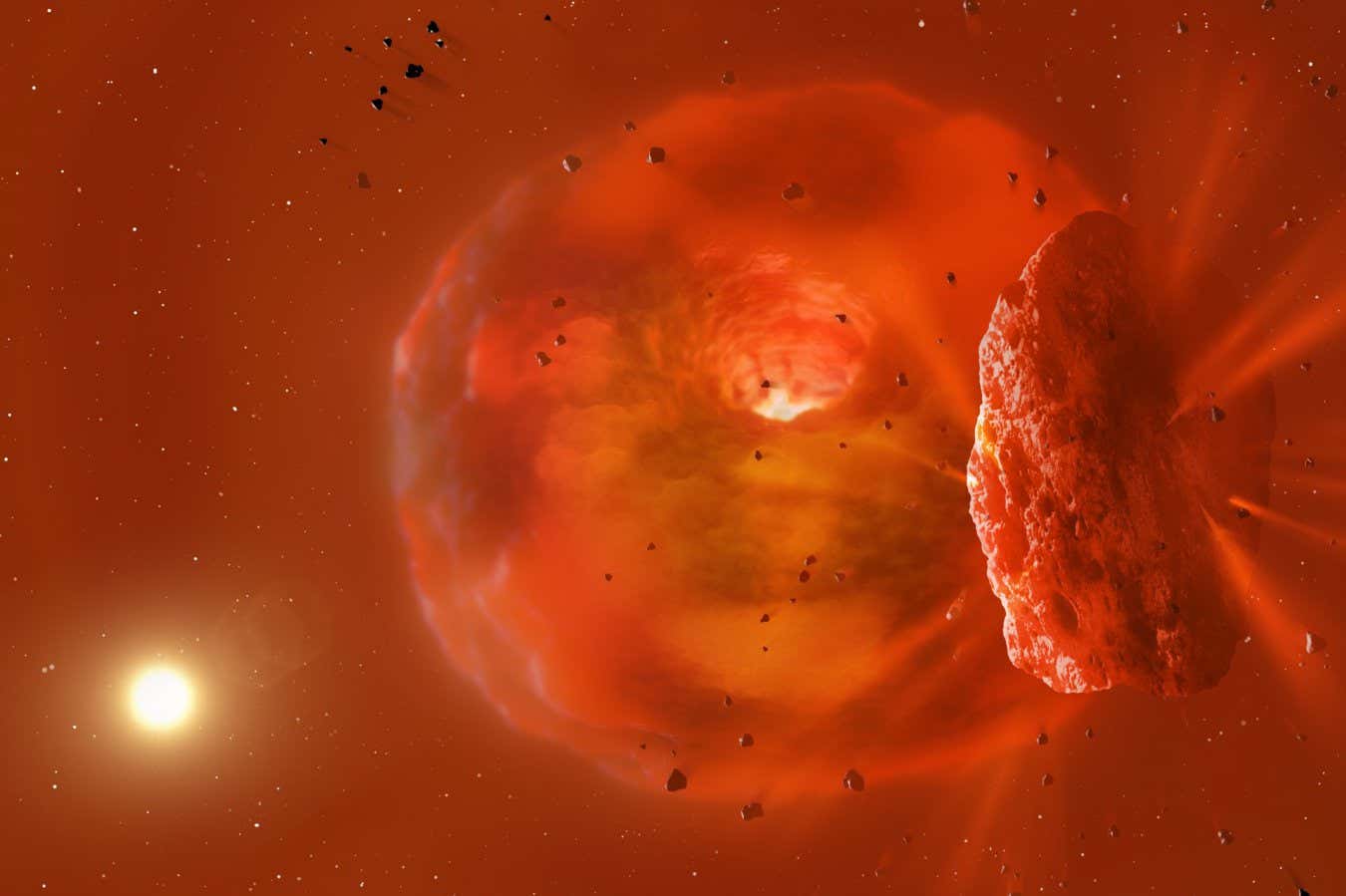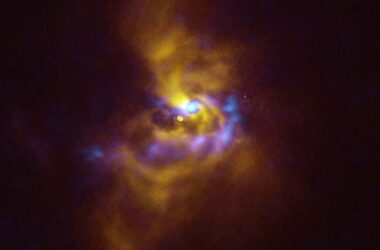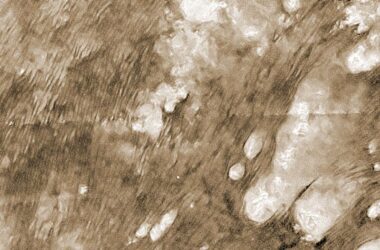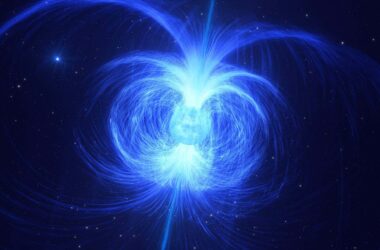Astronomers have observed what appears to be a cataclysmic collision between two giant planets in a star system located 1800 light years away from Earth. This is the first time such an event has been witnessed, allowing scientists to study the aftermath of a planetary collision in real time.
The event was initially detected in 2021 when a sun-like star named ASASSN-21qj experienced a drastic dimming, with its brightness decreasing by up to 95%. Further analysis of past observations revealed that the star had actually doubled in brightness three years prior to the dimming, indicating a significant event had occurred.
After considering various possibilities, the most plausible explanation for this phenomenon is a collision between two ice giants, which resulted in the formation of a doughnut-shaped disc of heated dust and gas around the star. This disc obscures our direct view of the star.
The two colliding planets were estimated to be several times the mass of Earth, similar to Neptune, and they orbited the star at a distance comparable to Jupiter’s orbit around our own sun. When they collided, the immense force transformed them into “molten muck,” leaving behind a seven-times-larger ball of silica vapor than our sun.
Close observation of the collision would have revealed a bright red glowing collision with rock and debris being ejected from the planets’ solid cores. At the center of this ball, a white-hot remnant would have formed, eventually condensing into a torus-shaped ring orbiting the star at a scorching temperature of around 700°C.
Based on the researchers’ analysis, it is believed that these colliding planets were rich in water vapor, making them similar to ice giant planets like Neptune and Uranus. Over time, the remains of the collision may coalesce and form a new planet surrounded by multiple moons.
The exact cause of the collision remains uncertain. The planets may have been disrupted in their orbits by the gravitational influence of a passing star or another planet, leading to their eventual collision. The energy released during the collision was equivalent to a small star burning for two years.
While previous evidence suggests that planetary collisions do occur, some scientists have suggested alternative explanations. For instance, one researcher proposed that comets breaking apart in the system could have caused the dimming of ASASSN-21qj. However, the majority of the evidence supports the planetary collision theory.
Future observations of the star system, possibly using the James Webb Space Telescope, may provide further insights and confirm the planetary collision hypothesis. If the collision theory is correct, astronomers predict that additional light will be detected bouncing off the dust cloud surrounding the star within the next five to ten years.
This discovery challenges previous assumptions about the occurrence of giant impacts as star systems age. In our solar system, it is believed that such collisions became less frequent after approximately 100 million years. However, ASASSN-21qj, which is estimated to be 300 million years old, demonstrates that significant collisions can still happen at a later stage in a star system’s lifespan.
The study of this distant star system provides astronomers with valuable insights into the dynamics and evolution of planetary systems. By observing rare events like planetary collisions, scientists can enhance their understanding of the formation and fate of planets in the universe.
Topics:








